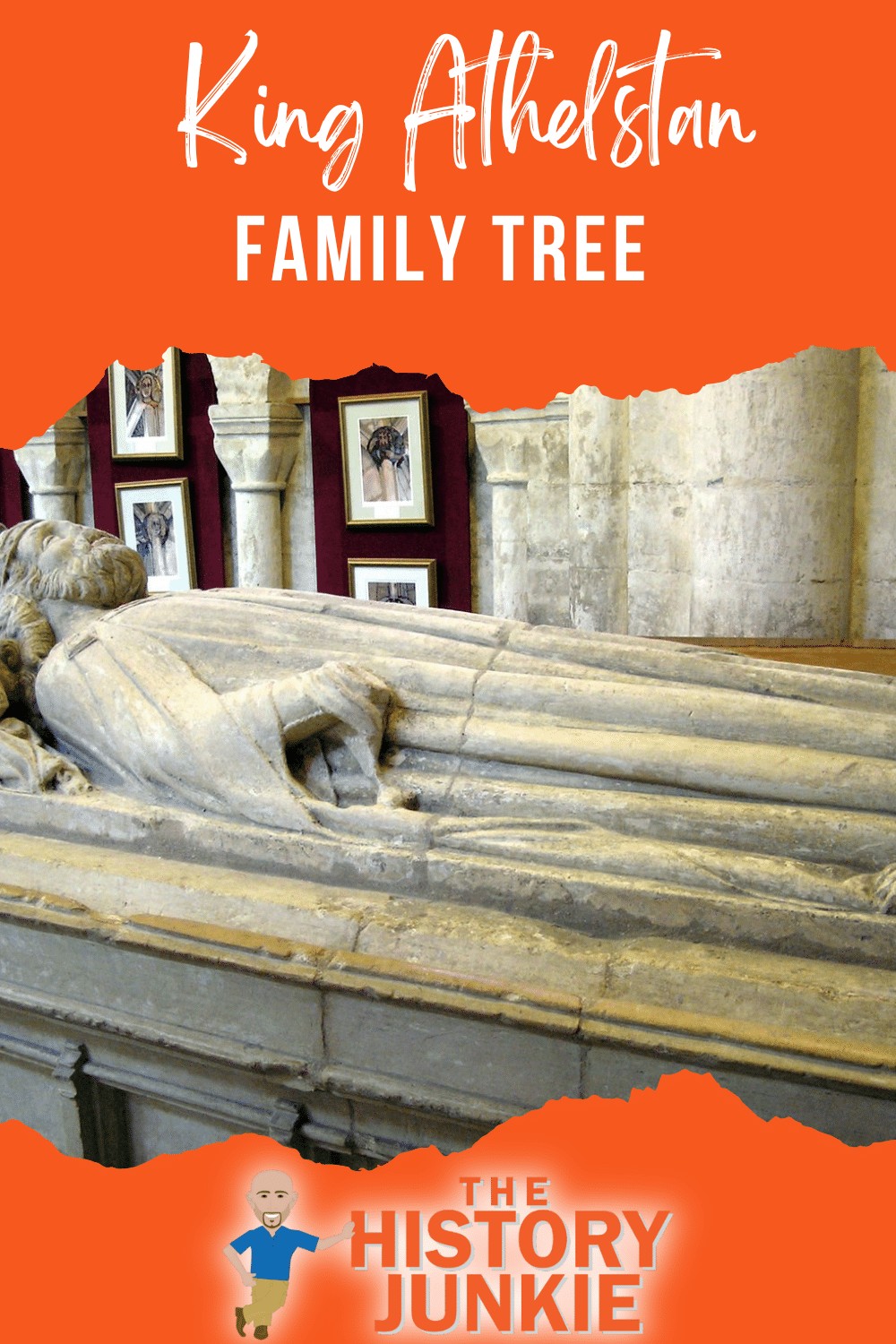Athelstan was the king of the Anglo-Saxons from 924 to 927 and king of the English from 927 to his death in 939.

He was the son of King Edward the Elder and his first wife, Ecgwynn. He is considered the first king of England and one of the greatest Anglo-Saxon kings.
He never married and had no children and was succeeded by his half-brother, Edmund I.
Jump to:
When Edward died in July 924, Athelstan was accepted by the Mercians as king. His half-brother Alfweard may have been recognized as king in Wessex but died within three weeks of their father's death.
Athelstan encountered resistance in Wessex for several months and was not crowned until September 925.
Athelstan centralized government by increasing control over the production of charters and summoning leading figures from distant areas to his councils.
These meetings were also attended by rulers from outside his territory, especially Welsh kings, who thus acknowledged his overlordship.
More legal texts survive from his reign than from any other 10th-century English king. These texts show his concern about widespread robberies and the threat they posed to social order.
His legal reforms were built on those of his grandfather, Alfred the Great.
Athelstan was one of the most pious West Saxon kings and was known for collecting relics and founding churches.
His household was the center of English learning during his reign, and it laid the foundation for the Benedictine monastic reform later in the century.
Family Overview
He was the grandson of Alfred the Great and the only son of Edward that had any contact with the great King prior to his death.
is mother was either related to a saint or came from common origins. She died in 899 when Athelstan was young. Despite her possible humble beginnings, she gave birth to a great King of England.
Athelstan never married or had children. It is unclear as to why he did this, but his devotion to the church and expansion of the empire may have taken too much of his time.
Family Tree Chart
Parents:
Edward the Elder (874 - 924) - He was the son of Alfred the Great and Eahlswith, Princess of Mercia. He succeeded to the title of King of Wessex and Mercia in October 899; He was crowned King of Wessex and Mercia in May 900 at Kingston-upon-Thames, London. During his reign, he and his sister, Ethelfleda of Mercia, fought constantly the influxes of the Danes.
Ecgwynn of Cent (unknown - 899) - She was the mother of Athelstan, who would become the next great King of England. She may have been related to St Dunstan, the aristocratic tenth-century Archbishop of Canterbury. But William of Malmesbury also stated that Athelstan's accession in 924 was opposed by a nobleman who claimed that his mother was a concubine of low birth.
Spouse: None
Children: None
Siblings:
Eadgifu of Wessex (902 - unknown) - Born around 902 as the daughter of Edward the Elder and his wife Aelfflaed. She was married to Charles III of the Franks in 917 and bore him one son, Louis. After his death, she sent her son to England, where he lived at her half-brother's court.
Aelfweard of Wessex (904 - 924) - He claimed the throne of Wessex after his father's death. His half-brother Athelstan claimed the throne of Mercia, and it seemed that there would be a conflict as to who would rule a united Wessex and Mercia; however, his death three weeks later ended the possibility of conflict.
Eadhilda of Wessex (908 - 937) - In 926, King Athelstan received an embassy from his cousin, Adelolf, Count of Boulogne, on behalf of Hugh, and Athelstan agreed to give his half-sister, Eadhild, in marriage in return for an enormous quantity of gifts and relics.
Edith of Wessex (910 - 946) - She married Otto I von Sachson, Holy Roman Emperor, who was considered by many historians to be the founder of the Holy Roman Empire. The couple had at least four surviving children, including their youngest, who would become Otto II. She died young and was buried at the Cathedral in Magdeburg, Germany.
Edmund the Magnificient (921 - 946) - During his reign, the kingdom was plagued by Irish Viking raiders. He was forced to cede to them, Northumbria, but he succeeded in recapturing it in 944, taking advantage of factionalism among the enemy leaders. In 945, he and King Malcolm I of Scotland signed a treaty of mutual military support, ensuring safe borders and peaceful relationships with Scotland. He married a second time in early 946 to Aethelflaed. Later that year, on St Augustine's Day at Pucklechurch, South Gloucestershire, he was murdered by an outlaw, Leofa, an exiled thief, who was then himself killed. Eadmund's sons were still minors of less than five years, and so he was succeeded by his brother.
Eadred (923 - 955) - He succeeded to the throne in May 946 upon the murder of his brother. He was crowned king on August 16, 946, at Kingston-upon-Thames, London. In 947, Eric Bloodaxe led the Norsemen residing in Northumbria against Eadred. In 954, the Northumbrians expelled Eric, and Eadred regained control of the region after the battle of Stainemore. He provided impetuous to monastic reform by appointing Aethelwold to the Abbacy of Abingdon. The man who would become Saint Dunstan was one of his chief advisors, and he relied upon him a great deal in his latter years. Having suffered from an unidentified chronic illness for several years, he succumbed at about age 32.
